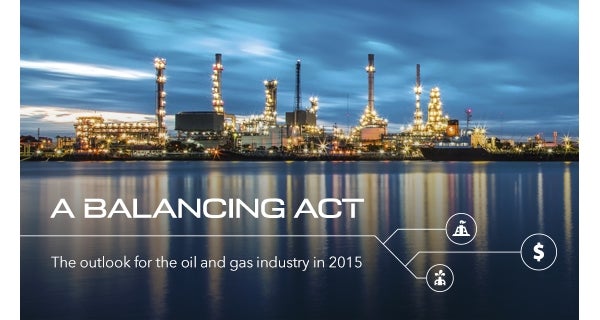
In the face of falling oil prices, confidence in the outlook for the oil and gas industry has dropped dramatically among sector professionals from 65% to 28% in the last three months, according to new research published today by DNV GL. The pessimistic outlook is also reflected in capital expenditure (CAPEX) intentions, with those planning to increase CAPEX in the same period dropping from 40% to 12% and those planning to reduce headcount increasing from 26% to 47%.
The findings highlight that senior industry professionals are split over how to tackle the year ahead, according to DNV GL’s fifth annual research report on the outlook for the sector. Those who are most confident about reaching their profit targets plan different cost-management measures, taking a long-term approach to riding out the storm, while those pessimistic about hitting their profit targets are more likely to take short-term cost-cutting measures.
Among the ‘profit confidents’, 67% intend to increase or maintain capital investment compared to 29% among ‘profit pessimists’ and 70% intend to bolster R&D spending compared to 40% of the pessimists. When it comes to imposing strict cost controls, profit confidents have a greater focus than profit pessimists on improving workflow / work processes (45% versus 35%), a greater use of automation (11% versus 1%) and the adoption of new IT technology (13% compared with 4%). The ‘profit pessimists’ are more likely to take cost-cutting measures such as reducing headcount (35% compared with 15% in the confident group).
Among respondents in North America, a third (33%) are confident about the year ahead, the most confident of any region, but this is still a significant drop from 93% the previous year. The biggest drop in confidence, however, is in Asia Pacific where 27% are confident about the outlook for 2015 compared to 89% the year before. The lowest confidence globally is reported in Europe (26%).
Elisabeth Tørstad, CEO of DNV GL – Oil & Gas, said: "While the strong correlation between the oil price and confidence is expected, we need to take heed of lessons learned from previous downturns. The oil and gas sector faces a dilemma over balancing long-term growth or cutting back more sharply in response to short-term pressures.
"By taking a broader view, reducing complexity and standardising processes, materials and documentation, industry players can develop a long-term sustainable cost base to adjust to this lower-margin environment.
"Tight schedules, high activity and complex projects have driven costs up over the last few years, but it is interesting to see that the most confident industry players are forging a different path to their less confident peers. They are showing counter-cyclical behaviour by investing during the downturn, which is positive for the long-term health of the industry."
DNV GL’s report, ‘A Balancing Act: The outlook for the oil and gas industry in 2015’, provides a timely assessment of industry confidence and priorities for the year ahead and is based on a global survey of more than 360 senior industry professionals and executives carried out during the week starting 19 January 2015.
The report also includes 18 in-depth interviews with a range of experts, business leaders and analysts. The research has been compared with a previous survey carried out from October to November 2014 to monitor shifting sentiment during a period of falling barrel prices, as well as DNV GL’s 2014 industry outlook report.
Other key findings include:
- The industry’s skills shortage, which has been the largest barrier to growth for the past two years, has fallen to tenth place (14%) jointly with geopolitical instability in key markets. Low oil prices are now the biggest barrier in 2015, cited by 68% of respondents. The weak global economy is second (35%), followed by uneconomic gas prices (20%)
- The US is the most favourable investment destination (28%), followed by China (11%) and Norway (9%)
- Globally, respondents in Asia Pacific are those who most expect to increase CAPEX (15%) while the lowest expectations, only 4% of senior oil & gas professionals, are recorded in Latin America
- Intentions to decrease headcount are similar in Europe, North America and Asia Pacific (between 46% and 49%)
- The region with the highest intention to increase cost control is Latin America (78%)
- A quarter (25%) of respondents plan to increase the standardisation of tools and processes to impose stricter cost controls
For more information, please contact DNV GL.

